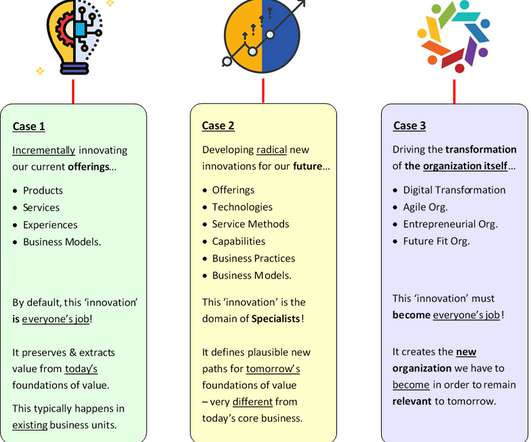8 Types of Innovation in Business: A Comprehensive Guide
Qmarkets
MARCH 27, 2024
For companies, embracing incremental innovation means fostering a culture of continuous improvement where even the smallest changes are valued for their cumulative impact over time. Radical innovation is about making significant leaps forward, often creating new industries or reshaping existing ones.































Let's personalize your content